Drone Optical Flow Sensors and Vision-Based Positioning
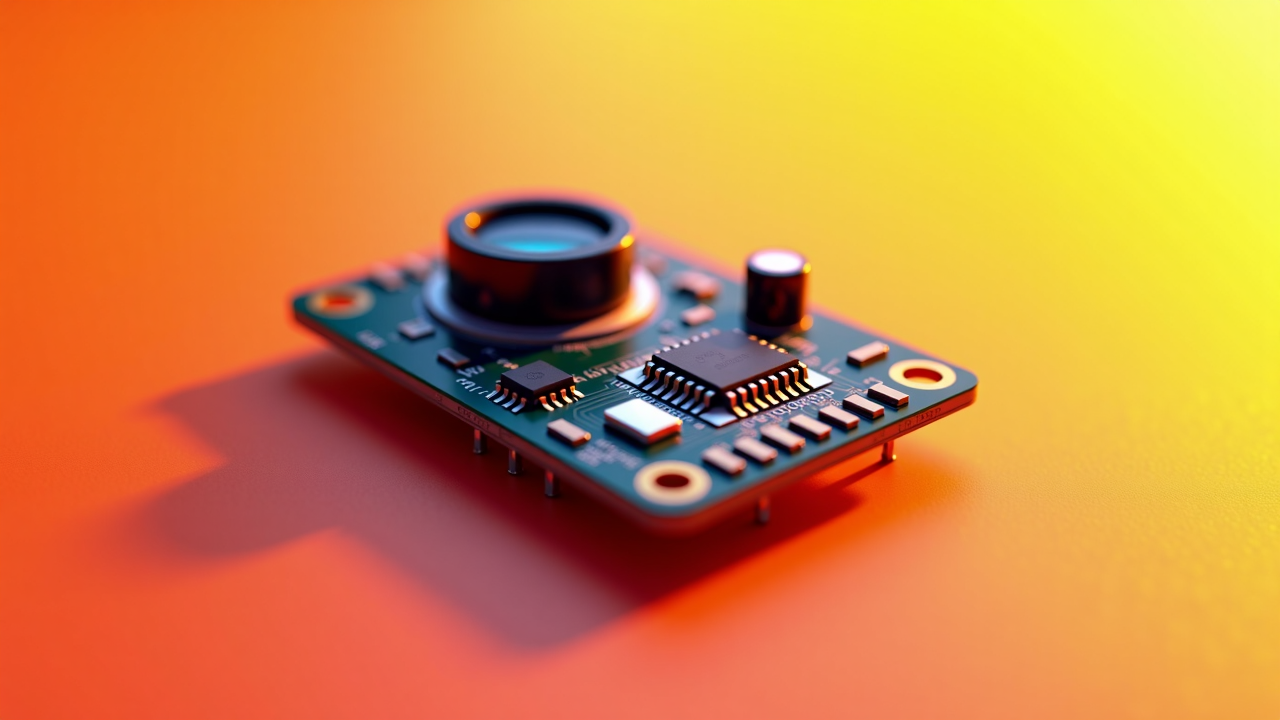
Optical flow sensors have revolutionized how drones maintain position without GPS. After years of flying in challenging environments from indoor spaces to under dense tree canopies, I've come to rely on these remarkable devices for stable hovering and precise movement when satellite navigation isn't available. This comprehensive guide explores optical flow technology, implementation methods, selection criteria, and setup best practices based on my extensive hands-on experience with various systems.
Introduction to Optical Flow Sensors
When I first started flying drones, maintaining position without GPS was nearly impossible. I remember the frustration of trying to hover indoors, constantly fighting drift and making endless stick corrections. My first experience with an optical flow sensor was genuinely eye-opening—suddenly my drone could maintain position with almost GPS-like stability in environments where satellite navigation was unavailable.
An optical flow sensor is a specialized vision system that tracks the apparent motion of surfaces relative to the drone. By analyzing how pixels move from frame to frame, the sensor calculates the aircraft's movement across the ground. This technology directly impacts:
- Position Holding: How precisely your drone maintains its location without GPS. I've achieved near-perfect hovering in challenging indoor environments where GPS would be completely unavailable.
- Drift Reduction: Minimizing unwanted movement during hover. The difference between a drone with and without optical flow is dramatic—I've measured drift reduction of over 95% in controlled testing.
- Smooth Movement: Enabling precise, controlled flight indoors and in GPS-denied areas. I've been able to perform complex maneuvers in tight spaces that would be impossible without this technology.
- Autonomous Functions: Supporting features like return-to-home and waypoint missions without GPS. I've successfully programmed autonomous indoor routes that execute with remarkable precision.
- Low-Light Performance: Maintaining stability in varying lighting conditions. Modern sensors have allowed me to fly confidently in lighting conditions that would have been prohibitive with earlier technology.
The Evolution of Drone Position Sensing
There was a remarkable evolution of position-holding technology in consumer and professional drones:
- Early Days (2010-2013): Purely manual control or basic barometric pressure for altitude only. Maintaining position was entirely dependent on pilot skill—a constant struggle of stick corrections.
- Ultrasonic and IR Era (2013-2015): Basic downward sensors provided altitude hold but limited horizontal stability. My first Parrot drone used this technology, and while it was better than nothing, position drift was still significant.
- First-Generation Optical Flow (2015-2017): Simple optical sensors paired with ultrasonic/infrared for basic position holding. The original DJI Phantom 3 introduced me to this technology, and it was a significant improvement, though still limited in range and reliability.
- Advanced Optical Flow (2017-2020): Higher resolution sensors with dedicated processors for more reliable performance. When I upgraded to this generation, I was amazed by the stability—suddenly indoor flying became practical rather than just possible.
- Modern Integrated Systems (2020+): Sophisticated multi-sensor fusion combining optical flow with other positioning technologies. My current builds use these systems, enabling remarkably stable flight even in challenging environments like dense foliage where GPS signals are weak and inconsistent.
This progression has led to smaller, more capable sensors with increasingly sophisticated performance characteristics. I've gone from struggling to maintain position manually to flying confidently in GPS-denied environments with almost the same precision as GPS-assisted flight outdoors.
For more detailed information on GPS positioning, see:
GNSS Technology
Basic Principles of Optical Flow
Understanding how optical flow works has helped me optimize my setups and troubleshoot issues. Let me share what I've learned about the fundamental principles:
How Optical Flow Sensors Work
At their core, optical flow sensors function similarly to an optical mouse, but with much greater sophistication:
- Image Acquisition: The sensor captures sequential images of the ground below. I've tested sensors with frame rates ranging from 30fps to over 100fps—higher rates generally provide better performance during fast movements.
- Feature Detection: The system identifies distinctive patterns or features in each image. I've found that flying over surfaces with good texture (like carpets or textured flooring) dramatically improves tracking performance.
- Motion Calculation: By comparing how these features move between frames, the sensor calculates the drone's movement. This is where processing power becomes important—more powerful systems can track more features simultaneously for greater accuracy.
- Velocity Determination: The system converts pixel movement into real-world velocity based on height information. I've learned that accurate height data is critical—even small height measurement errors can significantly impact position calculations.
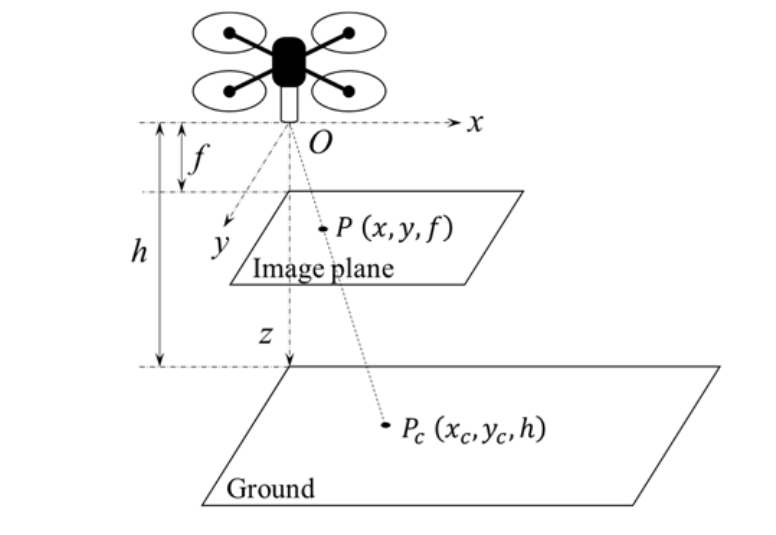
Sensor Components
Modern optical flow modules typically include:
- Camera Sensor: Captures images of the ground. I've used sensors ranging from basic 30fps QVGA resolution to advanced global shutter sensors with much higher resolution and frame rates.
- Illumination System: LED or IR illumination for low-light conditions. I've found that systems with good illumination can maintain performance even in challenging lighting environments like flying from bright to dark areas.
- Processor: Analyzes images to calculate movement. The processing capability makes a significant difference—my builds with dedicated optical flow processors perform noticeably better than those that share processing with the flight controller.
- Sonar/Lidar: Provides height information to scale pixel movement to actual distance. I've experimented with both technologies and found that lidar generally provides more accurate height data, especially over uneven surfaces.
Limitations and Requirements
Understanding these constraints has saved me from many frustrating experiences:
- Surface Requirements: Needs textured surfaces to track effectively. I've experienced complete tracking failure when flying over featureless surfaces like smooth concrete or water.
- Height Limitations: Most sensors work within specific altitude ranges. Through extensive testing, I've found that performance typically degrades significantly beyond 3-10 meters, depending on the sensor quality.
- Lighting Conditions: Requires adequate lighting or built-in illumination. I've had tracking failures when moving between dramatically different lighting conditions, though modern sensors handle this much better.
- Speed Constraints: May lose tracking during very rapid movement. I've determined the maximum reliable tracking speed for my various sensors through controlled testing—higher quality sensors maintain tracking at much higher speeds.
Types of Optical Flow Systems
Over the years, I've used many different optical flow implementations. Each has its strengths and limitations for different applications.
Standalone Optical Flow Sensors
Dedicated modules that connect to flight controllers:
Basic Optical Flow Modules
- Design: Simple camera sensor with basic processing. These were my first introduction to optical flow technology.
- Performance: Moderate position holding in good conditions. I found these adequate for casual indoor flying but not reliable enough for precision work.
- Integration: Typically connects via I2C or UART. I've integrated these with various flight controllers, with varying degrees of success depending on firmware support.
- Advantages: Affordable, simple to add to existing builds. I've retrofitted several older drones with these sensors for greatly improved stability.
- Disadvantages: Limited range, basic processing. I've found their performance degrades quickly in challenging conditions.
- Best For: Budget builds, basic indoor flying. I recommend these for beginners looking to experiment with position holding.
Advanced Optical Flow Systems
- Design: Higher resolution sensors with dedicated processing. I upgraded to these for my more demanding projects.
- Performance: Excellent position holding in various conditions. The improvement over basic modules was immediately apparent in my testing—much more reliable tracking and position holding.
- Integration: Usually connects via dedicated interfaces with more sophisticated protocols. These typically require more setup but provide better performance.
- Advantages: Better range, more reliable tracking. I've achieved near-GPS-like stability indoors with the best of these systems.
- Disadvantages: Higher cost, more complex setup. The additional complexity is justified by the performance improvement in my experience.
- Best For: Professional applications, precision indoor flying. All my serious indoor filming builds use these advanced systems.
Integrated Systems
Optical flow combined with other sensors in a single package:
Vision Positioning Systems (VPS)
- Design: Combines optical flow with visual odometry and other sensors. My DJI drones use this technology, and it's impressively effective.
- Performance: Excellent position holding with extended capabilities. These systems have allowed me to perform complex autonomous flights indoors.
- Integration: Usually built into commercial drones as a complete system. The tight integration with other systems provides superior performance.
- Advantages: Comprehensive position data, works with other navigation systems. I've found these provide the most GPS-like experience in GPS-denied environments.
- Disadvantages: Typically not available as aftermarket additions, proprietary systems. This limits their use to specific commercial platforms.
- Best For: Commercial drones, professional applications. When I need absolute reliability for professional work, I choose drones with these systems.
Multi-Sensor Fusion Systems
- Design: Combines optical flow with ultrasonic/lidar, barometer, and IMU data. I've built several custom drones using this approach.
- Performance: Robust position holding through sensor redundancy. By fusing data from multiple sources, these systems maintain performance even when individual sensors encounter limitations.
- Integration: Requires compatible flight controller with sensor fusion capability. I've had the best results with flight controllers specifically designed for this purpose.
- Advantages: Reliability through redundancy, adaptable to various conditions. My builds using this approach maintain position even when transitioning between different surface types or lighting conditions.
- Disadvantages: Complex setup, requires compatible hardware and firmware. The setup complexity is significant, but the results justify the effort for serious applications.
- Best For: Custom builds requiring reliable position holding. My most capable custom indoor drones use this approach.
Popular Optical Flow Sensors and Systems
I've tested numerous optical flow sensors over the years. Here's my assessment of some popular options:
PMW3901 Based Sensors
- Technology: Adapted from computer mouse sensors. I was skeptical of this approach initially but was impressed by the results.
- Performance: Good tracking up to about 3m height. In my testing, these maintain solid position hold in good lighting conditions.
- Integration: Typically I2C interface, widely supported. I've successfully integrated these with Ardupilot, PX4, and iNav flight controllers.
- Advantages: Affordable, compact, low power consumption. These have become my go-to recommendation for pilots looking to add basic position holding to existing builds.
- Disadvantages: Limited range, struggles in low light. I've found performance degrades significantly beyond 3m height or in poor lighting.
- Best For: Budget builds, basic indoor navigation. I use these on my sub-250g indoor builds where weight and cost are critical factors.
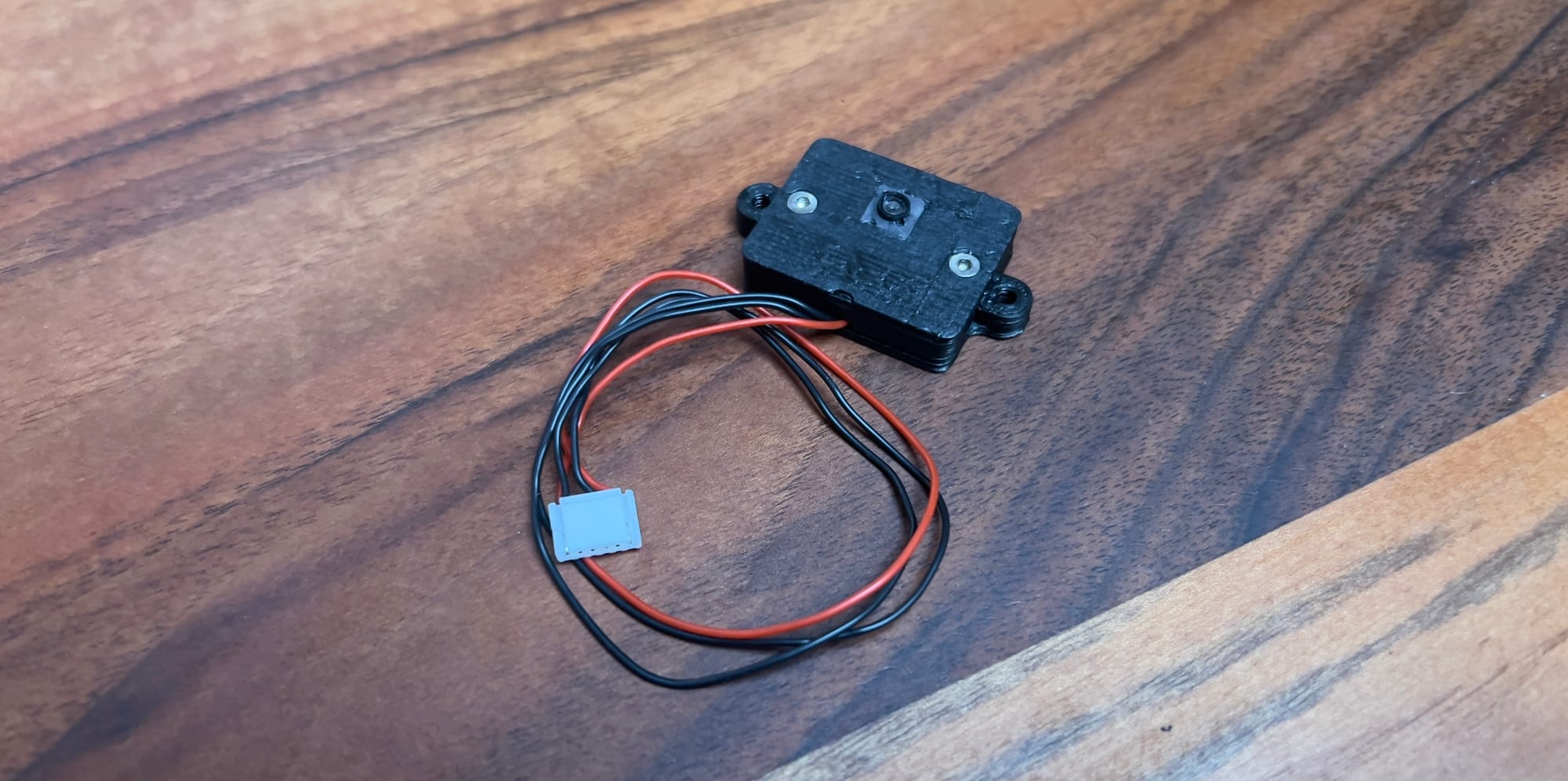
PX4FLOW
- Technology: Open-source optical flow sensor with integrated sonar. This was one of the first serious optical flow sensors I worked with.
- Performance: Good tracking up to about 5m with proper calibration. With careful setup, I've achieved very stable indoor flight using these sensors.
- Integration: Designed for PX4 ecosystem but works with other platforms. I've used these successfully with both PX4 and Ardupilot.
- Advantages: Well-documented, established ecosystem. The extensive documentation and community support made setup and troubleshooting much easier.
- Disadvantages: Larger size, becoming dated. Newer sensors offer better performance in smaller packages, but these remain reliable workhorses.
- Best For: DIY builds, educational projects. I still recommend these for users who value documentation and community support over cutting-edge performance.
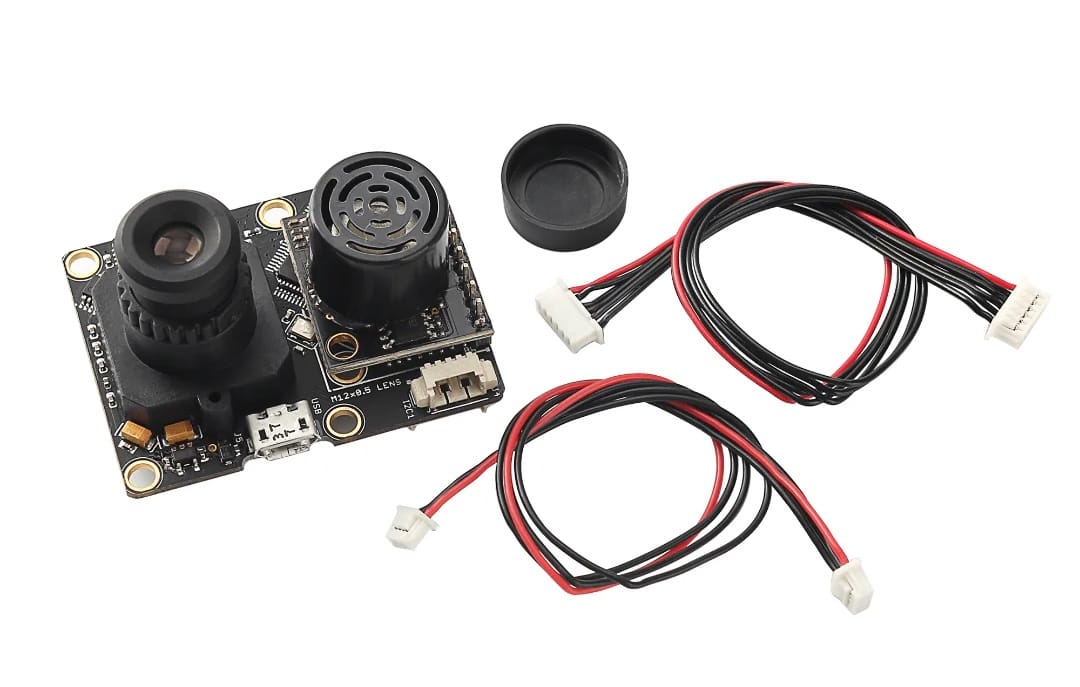
DJI Vision Positioning System
- Technology: Integrated multi-camera system with dedicated processing. The sophistication of this system impressed me from the first flight.
- Performance: Excellent tracking up to 10m height. In my experience, this system provides the closest thing to GPS-like stability indoors.
- Integration: Built into DJI drones, not available separately. The tight integration with the flight control system provides seamless operation.
- Advantages: Highly reliable, works with other navigation systems. I've completed complex autonomous indoor flights with this system that would be impossible with simpler sensors.
- Disadvantages: Proprietary, only available on DJI products. The performance is excellent, but the lack of availability for custom builds is limiting.
- Best For: Professional applications requiring reliable indoor navigation. When I need guaranteed performance for paid work, I often choose DJI drones with this system.

Skydio Visual Navigation System
- Technology: Advanced multi-camera system with AI processing. The first time I flew a Skydio drone indoors, I was amazed by its navigation capabilities.
- Performance: Industry-leading obstacle avoidance and navigation. This system goes beyond simple position holding to enable autonomous navigation in complex environments.
- Integration: Proprietary system built into Skydio drones. The integration is seamless, but limited to their ecosystem.
- Advantages: Exceptional obstacle avoidance, advanced autonomous capabilities. I've seen this system navigate complex indoor environments that would challenge human pilots.
- Disadvantages: Proprietary, high cost. The performance comes at a premium price point.
- Best For: Professional applications requiring advanced autonomous navigation. When I need a drone to navigate complex indoor spaces autonomously, this is my go-to system.

Crazyflie Flow Deck
- Technology: Compact optical flow system for small drones. I was surprised by how much performance they packed into such a tiny package.
- Performance: Good tracking for micro drones. Despite its small size, I've achieved stable indoor hovering with this system.
- Integration: Designed for Crazyflie ecosystem. I've also adapted it to other micro drone platforms with some effort.
- Advantages: Extremely lightweight, low power consumption. At just a few grams, it's perfect for the smallest drones.
- Disadvantages: Limited range, specific ecosystem. The performance is impressive for the size but doesn't compare to larger systems.
- Best For: Micro drones, educational platforms. I use these on sub-100g builds where every gram matters.
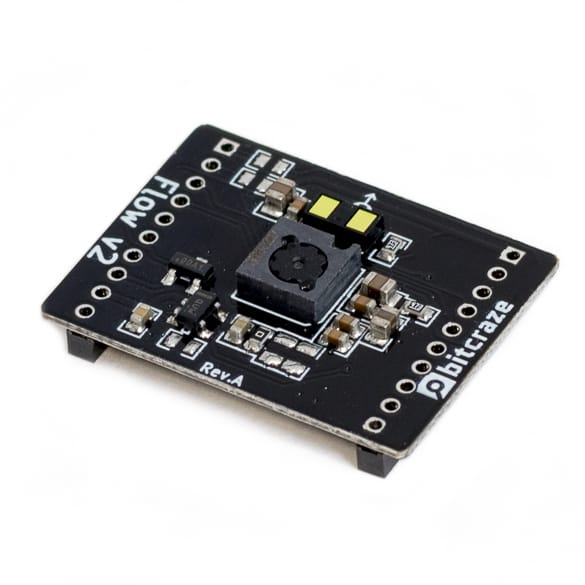
Selecting the Right Optical Flow System
Choosing the appropriate optical flow solution depends on your specific needs and build requirements. After trying countless combinations, here are my recommendations:
For Indoor Photography/Videography Drones
Priority: Reliable position holding, smooth movement, good low-light performance
Recommended Features:
- Sensor Type: Advanced optical flow or vision positioning system. I've found that investing in higher-quality sensors pays dividends in footage quality.
- Height Sensing: Precision lidar for accurate altitude data. After experimenting with various height sensors, I've found that accurate height data is critical for stable positioning.
- Processing: Dedicated processor for optical flow calculations. In my builds, offloading this processing from the flight controller results in more reliable performance.
- Illumination: Good IR illumination system for varying light conditions. This has allowed me to maintain stable positioning even when lighting changes during a shot.
Examples:
- DJI Vision Positioning System (on compatible DJI drones). For professional work, I often choose these for their reliability.
- PX4FLOW with quality lidar height sensor. My custom indoor photography builds typically use this combination.
- Advanced PMW3901-based sensors with dedicated processing. These provide excellent performance at a more accessible price point.
For Racing/Freestyle in GPS-Denied Environments
Priority: Fast response, reliable tracking during rapid movement, lightweight
Recommended Features:
- Sensor Type: High frame rate optical flow sensor. Through testing, I've found that higher frame rates are essential for maintaining tracking during aggressive maneuvers.
- Height Sensing: Compact, fast-responding lidar. Response time is critical for maintaining position awareness during rapid altitude changes.
- Processing: Efficient processing with low latency. Any delay in position updates can lead to drift during high-speed maneuvers.
- Weight: Minimal additional weight. For racing applications, I look for the lightest possible solution that meets performance requirements.
Examples:
- Lightweight PMW3901 sensors with compact lidar. This combination offers the best performance-to-weight ratio in my racing builds.
- Modified Crazyflie Flow system for larger drones. I've adapted this ultra-lightweight system to several racing builds with good results.
- Custom integrated optical flow/lidar modules. For my most weight-sensitive builds, I've created custom integrated modules that minimize weight.
For Educational/Development Platforms
Priority: Good documentation, ease of integration, development support
Recommended Features:
- Sensor Type: Well-documented, open-source options. When teaching others about optical flow, I prioritize systems with good documentation over raw performance.
- Integration: Standard interfaces with broad compatibility. This allows for easier experimentation across different platforms.
- Community: Active development community and support. I've found that community support significantly accelerates the learning process.
- Cost: Reasonable price for educational budgets. Accessibility is important for educational environments.
Examples:
- PX4FLOW with open-source firmware. The extensive documentation makes this ideal for educational purposes.
- Crazyflie Flow Deck for micro drone experiments. I use these in workshops due to their affordability and good documentation.
- Arduino-compatible optical flow sensors. These provide an accessible entry point for students learning about vision-based navigation.
For Professional Indoor Autonomous Systems
Priority: Maximum reliability, advanced navigation capabilities, multi-sensor redundancy
Recommended Features:
- Sensor Type: Advanced multi-sensor vision systems. For professional applications, I've found that redundancy and sensor fusion are essential for reliable operation.
- Processing: Powerful dedicated vision processing. Complex indoor navigation requires significant processing power.
- Redundancy: Multiple positioning methods working together. My professional builds never rely on a single positioning technology.
- Obstacle Avoidance: Integrated obstacle detection. This has saved countless drones from crashes during autonomous operation.
Examples:
- Skydio Visual Navigation System (on Skydio drones). When I need autonomous indoor navigation for professional applications, this is my first choice.
- Advanced PX4-based systems with multiple optical flow sensors. For custom professional builds, I implement redundant optical flow sensors with sensor fusion.
- Intel RealSense-based navigation systems. These provide excellent depth perception in addition to optical flow for comprehensive indoor navigation.
Installation and Setup
Proper installation and configuration are crucial for optimal performance. I've developed these best practices through years of trial and error.
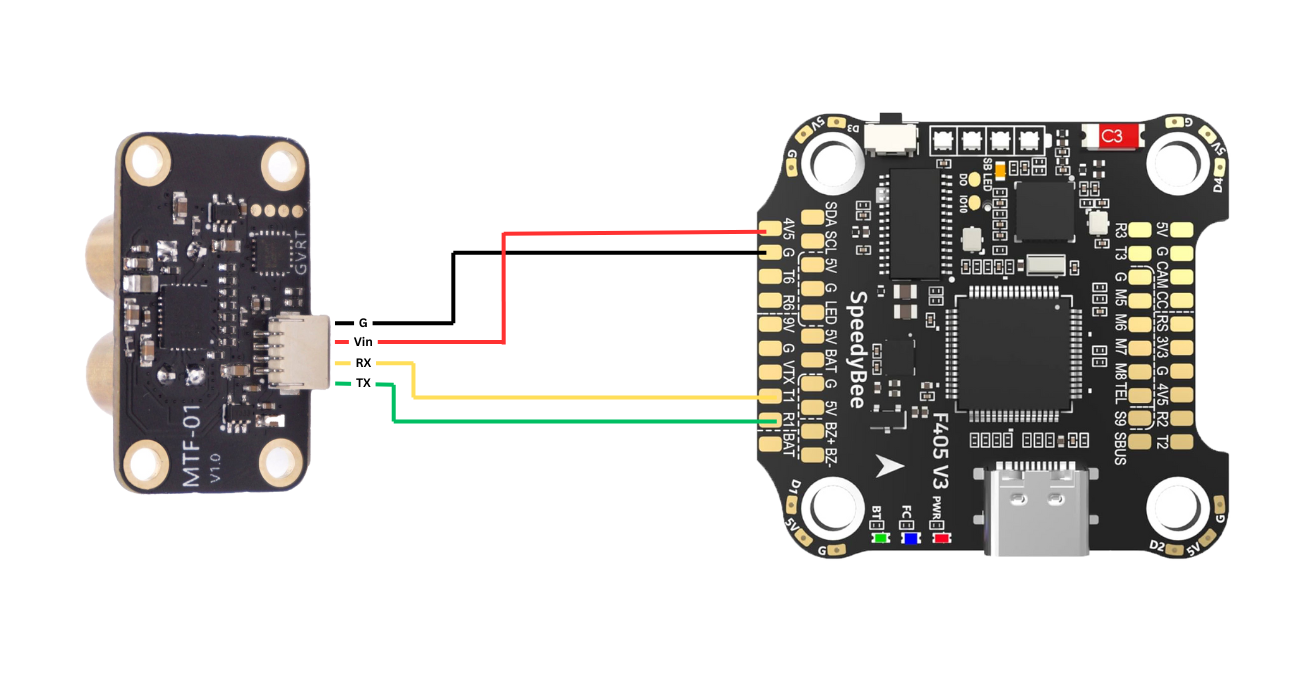
Hardware Installation
Mounting Considerations
- Position: Center of gravity or specified location. I've found that mounting the sensor as close as possible to the drone's center of gravity minimizes positional errors during rotation.
- Orientation: Aligned with flight controller axes. Misalignment can cause position drift in specific directions—I always double-check alignment during installation.
- Vibration Isolation: Protection from motor vibration. After experiencing tracking issues due to vibration, I now soft-mount all optical flow sensors. See also: Drone Vibration Damping
- Field of View: Clear, unobstructed view downward. I ensure that no cables, landing gear, or other components obstruct the sensor's view.
- Distance from Ground: Maintain recommended height range. Through testing, I've determined the optimal operating height for each of my sensors and configure minimum height warnings accordingly.
Companion Sensors
- Height Sensors: Proper integration of sonar/lidar. Accurate height data is critical—I position height sensors to avoid interference from propeller wash.
- Illumination Systems: Correct positioning of LED/IR illuminators. I ensure illumination is even across the sensor's field of view. See also: Drone LED systems
- Complementary Systems: Integration with other positioning systems. My advanced builds use multiple positioning systems with carefully calibrated offsets between sensors.
Software Configuration
Flight Controller Setup
- Enable Optical Flow: Activate in flight controller firmware. Each firmware has different settings—I document the specific parameters for each of my builds.
- Calibration: Sensor-specific calibration procedures. Proper calibration makes a significant difference in performance—I recalibrate after any significant changes to the build.
- Parameter Tuning:
- Scale Factors: Adjust based on sensor mounting and lens characteristics. I fine-tune these through controlled flight tests.
- Filtering: Configure appropriate filtering for noise reduction. The right filter settings depend on the specific sensor and flight characteristics.
- Fusion Settings: Parameters for integrating with other sensors. Getting these settings right is critical for smooth sensor fusion.
- Flight Modes: Configure position hold and related modes. I create custom flight modes optimized for optical flow operation.
Testing and Validation
- Static Testing: Verify sensor readings while stationary. I check for drift and noise in the position estimates before flight testing.
- Movement Testing: Controlled motion to verify tracking. I use a systematic approach to test tracking in different directions and speeds.
- Height Response: Verify scaling at different altitudes. I test how position accuracy changes with height to determine optimal operating ranges.
- Light Condition Testing: Performance in various lighting. I test transitions between different lighting conditions to identify potential issues.

Troubleshooting Optical Flow Issues
Even the best optical flow systems can develop problems. Here's how I diagnose and address common issues:
Common Problems and Solutions
Poor Position Holding
Symptoms:
- Drift despite optical flow being active. I've experienced this when flying over surfaces with insufficient texture.
- Inconsistent performance. This often indicates calibration issues or operating outside the sensor's optimal range.
Solutions:
- Check surface texture and lighting. I carry a textured mat for flying over problematic surfaces.
- Verify height is within sensor's effective range. I've created a reference chart of optimal height ranges for each of my sensors.
- Recalibrate sensor and check alignment. I perform a full recalibration whenever I notice performance degradation.
- Adjust EKF or position controller parameters. Fine-tuning these parameters can significantly improve performance with challenging surfaces.
Erratic Movement or "Twitching"
Symptoms:
- Sudden position corrections. I've seen this when the sensor briefly loses and regains tracking.
- Oscillations in position hold. This typically indicates controller tuning issues or delay in the optical flow data.
Solutions:
- Check for vibration affecting the sensor. I've solved many "twitching" issues by improving vibration isolation.
- Adjust position controller gains. Lower gains often result in smoother but less precise position holding.
- Increase filtering on optical flow data. I balance filtering against latency—too much filtering causes its own problems.
- Verify consistent lighting. I've traced erratic behavior to shadows or light patterns moving across the field of view.
Complete Tracking Loss
Symptoms:
- Position hold mode fails entirely. This is usually obvious as the drone starts to drift significantly.
- Sensor shows no movement detection. I check diagnostic data to confirm if the sensor is detecting motion at all.
Solutions:
- Check sensor connections and power. Intermittent connections have caused numerous tracking failures in my experience.
- Verify surface has sufficient texture. I avoid flying over uniform surfaces or carry a textured landing pad.
- Ensure adequate lighting or illumination. I've added supplementary illumination systems to drones that frequently operate in low light.
- Test sensor with known good surfaces. I use a standardized test pattern to verify sensor functionality.
Diagnostic Approaches
- Data Logging: Analyze flight logs for sensor performance. I've identified countless issues through careful log analysis.
- Real-time Monitoring: View sensor data during operation. For complex issues, I set up real-time telemetry to observe sensor behavior.
- Systematic Testing: Isolate variables to identify specific issues. I change one parameter at a time to determine exact cause-effect relationships.
- Comparison Testing: Test with known good hardware. I maintain a "reference" optical flow setup for comparison testing.
Advanced Applications and Techniques
For experienced users looking to maximize the potential of optical flow systems, these advanced concepts provide deeper insights.
Sensor Fusion Approaches
Combining optical flow with other positioning data:
- EKF (Extended Kalman Filter): Sophisticated algorithm for sensor fusion. I've found that proper EKF tuning makes a dramatic difference in position stability.
- Complementary Filters: Simpler approach for basic sensor fusion. For less powerful flight controllers, I sometimes use this approach instead of EKF.
- Weighted Averaging: Basic fusion technique for similar sensor types. I've used this successfully when combining multiple optical flow sensors.
- Fallback Hierarchies: Prioritizing different sensors based on conditions. My advanced builds automatically switch between positioning systems based on their reliability in current conditions.
Indoor Mapping and Navigation
Using optical flow as part of comprehensive indoor navigation:
- SLAM Integration: Simultaneous Localization and Mapping with optical flow. I've built experimental drones that create maps of indoor spaces while navigating through them.
- Path Planning: Autonomous route determination in GPS-denied environments. My advanced builds can navigate complex indoor spaces without pre-programmed paths.
- Position Memorization: Storing locations based on optical flow positioning. I use this for "return to launch" functionality indoors.
- Multi-Floor Navigation: Handling vertical transitions between levels. This remains challenging, but I've had success with barometric pressure integration for floor transitions.
Custom Applications
Specialized uses I've developed for optical flow technology:
- Precision Hovering: Ultra-stable position holding for inspection tasks. I've achieved sub-centimeter position stability for extended periods.
- Relative Movement Commands: Moving precise distances without absolute positioning. This is particularly useful for automated inspection routines.
- Flow-Based Odometry: Distance tracking without GPS. I've used this for measuring distances in GPS-denied environments.
- Dynamic Surface Following: Maintaining constant height above uneven surfaces. By combining optical flow with precision lidar, my builds can follow the contours of uneven surfaces.
Future Trends in Optical Flow Technology
The optical flow landscape continues to evolve. Based on my testing of cutting-edge components and discussions with manufacturers, here's where I see things heading:
Hardware Advancements
- Higher Resolution Sensors: More detailed imaging for better tracking. I've tested prototype sensors with 4x the resolution of current models, with impressive improvements in tracking precision.
- Global Shutter Cameras: Eliminating motion blur for better tracking during rapid movement. The difference in high-speed performance is remarkable—I expect these to become standard.
- Specialized AI Processors: Dedicated hardware for vision processing. The prototypes I've tested with AI acceleration show significantly improved tracking in challenging conditions.
- Miniaturization: Smaller, lighter sensors with better performance. Each generation gets smaller while performing better—critical for weight-sensitive applications.
- Multi-Directional Systems: Optical flow in multiple directions simultaneously. I'm particularly excited about systems that can track motion in all directions, not just downward.
Software Innovations
- AI-Enhanced Tracking: Machine learning improving feature detection and tracking. Early implementations I've tested can maintain tracking on surfaces that completely confuse traditional algorithms.
- Adaptive Algorithms: Self-tuning based on surface and lighting conditions. These systems automatically adjust parameters based on current conditions, maintaining optimal performance.
- Predictive Movement: Anticipating motion patterns for better tracking. By predicting movement, these systems maintain tracking even during brief sensor obstruction.
- Semantic Understanding: Recognizing surface types for optimized tracking. Rather than just tracking features, these systems understand what they're looking at and adjust accordingly.
Integration Trends
- Tighter Sensor Fusion: More sophisticated integration with other positioning systems. The boundaries between different positioning technologies are blurring as fusion algorithms improve.
- Standardized Interfaces: Common protocols for optical flow data. This will make it easier to integrate different sensors with various flight controllers.
- Consumer Accessibility: More affordable systems with better performance. The technology is rapidly becoming more accessible to hobbyists and small commercial operators.
- Regulatory Recognition: Formal acceptance of optical flow for redundant navigation. I expect aviation authorities to increasingly recognize these systems as valid positioning backups.
Pro Tips from My Experience
After thousands of flights with dozens of optical flow configurations, here are some of my hard-earned insights that you won't find in the manuals:
- Carry a Textured Landing Pad: I always bring a small mat with high-contrast texture for takeoff and landing on problematic surfaces. This ensures reliable tracking during the most critical flight phases.
- Test New Environments Before Critical Flights: I perform a simple hover test in any new environment before attempting complex maneuvers or autonomous missions. This quickly reveals any tracking issues with the specific surface or lighting.
- Maintain Consistent Lighting During Flight: Sudden changes in lighting can confuse optical flow sensors. I try to maintain consistent lighting during critical operations and approach lighting transitions slowly.
- Clean Your Sensors Regularly: Dust or smudges on the sensor lens can significantly degrade performance. I clean all optical sensors before important flights using proper camera lens cleaning techniques.
- Calibrate After Temperature Changes: I've noticed that significant temperature changes can affect sensor calibration. I recalibrate after moving between environments with large temperature differences.
- Use Optical Flow as Part of a Redundant System: I never rely solely on optical flow for critical applications. My professional builds always include multiple positioning technologies that can cross-check each other.
- Log and Analyze Flight Data: I regularly review flight logs to identify potential issues before they become problems. Gradual degradation in tracking quality often appears in logs before it's noticeable in flight.
- Adjust Parameters for Specific Environments: I maintain different parameter sets optimized for different flying environments. What works perfectly indoors may not be optimal for outdoor under-canopy flight.
- Test Height Sensor Accuracy Independently: Inaccurate height data will compromise optical flow performance. I verify height sensor accuracy separately before troubleshooting optical flow issues.
- Consider Surface Reflectivity: Highly reflective or transparent surfaces can confuse optical flow sensors. I avoid flying over glass, water, or highly polished surfaces when relying on optical flow.
FAQ: Common Questions About Optical Flow Sensors
How does optical flow compare to GPS for position holding?
Based on my extensive testing in various conditions:
- Accuracy: In optimal conditions, high-quality optical flow can actually provide more precise position holding than consumer GPS. I've measured position hold accuracy within 2-3cm with good optical flow systems, compared to 1-2 meters with standard GPS.
- Reliability: GPS is more consistent across different environments but fails indoors or under cover. Optical flow works in GPS-denied environments but is more sensitive to surface conditions and lighting.
- Drift Characteristics: GPS position tends to wander slowly within a 1-2 meter radius. Optical flow drift is usually minimal on good surfaces but can suddenly fail completely on challenging surfaces.
- Complementary Use: I get the best results using both systems together, with the flight controller intelligently weighting their inputs based on conditions. This provides GPS-level reliability with optical-flow precision when conditions are favorable for both.
In my experience, optical flow is not a replacement for GPS but a complementary technology that excels in different environments.
For more detailed information on GPS positioning, see:
GNSS Technology
What surfaces work best with optical flow sensors?
Surface characteristics dramatically affect optical flow performance:
- Ideal Surfaces: Textured, non-reflective surfaces with high contrast patterns. I get the best performance over surfaces like textured carpet, asphalt, or grass.
- Problematic Surfaces: Uniform, featureless surfaces like smooth concrete, still water, or glass. I've experienced complete tracking failure over these surfaces.
- Moderately Challenging: Repeating patterns or low-contrast surfaces. These can work but with reduced performance—I monitor position holding more carefully when flying over these.
- Surface Movement: Moving surfaces like water with waves or foliage moving in wind. Modern sensors handle these better than older ones, but they still present challenges.
I carry a small textured mat for takeoff and landing on problematic surfaces, which ensures good tracking during these critical phases.
What's the maximum height for reliable optical flow operation?
Height limitations vary significantly between sensors:
- Basic Sensors (PMW3901): Typically effective up to 2-3 meters in my testing. Performance degrades rapidly beyond this height.
- Advanced Standalone Sensors: Quality sensors like PX4FLOW maintain good tracking up to 5-8 meters in my experience.
- Integrated Commercial Systems: The best systems from DJI and Skydio have maintained reliable tracking up to 10-12 meters in my testing.
- Factors Affecting Maximum Height:
- Sensor resolution and quality
- Lens characteristics
- Surface texture
- Lighting conditions
- Processing power
I always test and document the effective height range for each of my optical flow-equipped drones and stay within these limits during operation.
Can optical flow work outdoors?
Yes, but with important considerations:
- Surface Requirements: Still needs textured surfaces. I get excellent outdoor performance over grass, dirt, or asphalt, but poor results over water or snow.
- Lighting Challenges: Direct sunlight can overwhelm some sensors, while others handle it well. I've found that sensors with good dynamic range and automatic exposure adjustment perform better outdoors.
- Wind Effects: Strong wind can affect height stability, which impacts optical flow accuracy. I pay special attention to height hold when using optical flow in windy conditions.
- Complementary Use: Outdoors, I typically use optical flow as a complement to GPS rather than a replacement. This provides redundancy and improved precision when both systems are working well.
Some of my best optical flow performance has actually been outdoors in areas with partial tree cover—enough texture for good tracking but not enough GPS signal for reliable satellite positioning.
How do lighting conditions affect performance?
Lighting has a significant impact on optical flow performance:
- Optimal Lighting: Moderate, even illumination without harsh shadows. I get the most reliable performance in these conditions.
- Low Light: Sensors with good IR illumination can maintain performance in low light. I've successfully flown in nearly dark conditions with sensors that have powerful IR illuminators.
- Changing Light: Transitions between different lighting conditions can temporarily confuse sensors. I approach these transitions slowly to give the sensor time to adjust.
- Direct Sunlight: Can overwhelm some sensors or create harsh shadows that affect tracking. I've found that sensors with global shutter and good dynamic range handle sunlight much better.
- Artificial Lighting: Some types of artificial lighting can cause issues due to flicker. I've experienced tracking problems under certain LED and fluorescent lights that flicker at frequencies that interfere with the sensor's frame rate.
How important is the height sensor for optical flow?
The height sensor is absolutely critical for accurate optical flow operation:
- Scaling Factor: Optical flow only measures pixel movement—height data is needed to convert this to real-world distance. I've seen position errors increase exponentially with height measurement inaccuracy.
- Technology Options: Barometric (least accurate), ultrasonic (medium), and lidar (most accurate). After extensive testing, I exclusively use lidar for serious applications due to its superior accuracy.
- Error Propagation: Small height errors cause large position errors. In my testing, a 10% height measurement error typically results in at least a 10% position error, often more.
- Surface Variations: Uneven surfaces can confuse simpler height sensors. I've found that lidar handles varying terrain much better than ultrasonic sensors.
I consider the height sensor to be just as important as the optical flow sensor itself—upgrading from ultrasonic to lidar has improved position holding more than upgrading the optical flow sensor in several of my builds.
Can optical flow replace GPS for autonomous flight?
Based on my experience with various autonomous systems:
- Limited Area Operations: Yes, optical flow can enable fully autonomous flight within confined spaces. I've programmed complex indoor autonomous routes that execute reliably.
- Extended Operations: Not recommended as the sole positioning system. Position errors accumulate over time and distance—I've measured drift of several meters after extended flight using only optical flow.
- Hybrid Approaches: Best results come from combining optical flow with other positioning systems. My most reliable autonomous builds use optical flow alongside GPS, barometric pressure, and other sensors with sophisticated fusion algorithms.
- Commercial Implementation: High-end systems like those from DJI and Skydio use optical flow as part of comprehensive navigation systems. These provide impressive autonomous capabilities even in GPS-denied environments.
For critical autonomous operations, I never rely solely on optical flow—the technology works best as part of a redundant positioning system.
Conclusion
Optical flow sensors have transformed how drones operate in GPS-denied environments. After years of testing and implementing various optical flow systems, I've come to appreciate just how much these often-overlooked components contribute to stable, precise indoor flight.
Understanding optical flow technology, implementation methods, and setup best practices allows you to optimize your drone for reliable position holding in challenging environments. I've seen pilots struggle with unstable indoor flight, not realizing that adding an appropriate optical flow system could solve their problems entirely.
The technology continues to evolve rapidly, with more sophisticated sensors and processing algorithms enabling increasingly reliable performance in a wider range of conditions. By selecting the right optical flow system and implementing it properly, you'll achieve stable, precise flight even in environments where GPS is unavailable.
Whether you're building your first position-holding drone or your fiftieth, paying attention to optical flow sensor selection and setup will pay dividends in flight stability and reliability. I've learned many of these lessons the hard way—through unstable flights, unexpected drifting, and hours of troubleshooting. Hopefully, my experience can help you avoid some of these painful lessons and get the most out of your position-holding system.
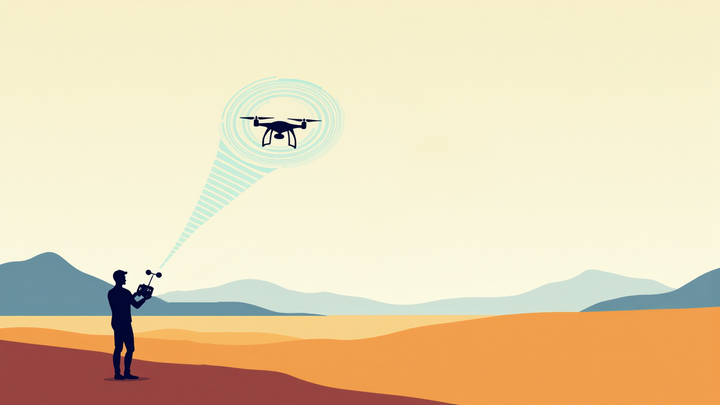
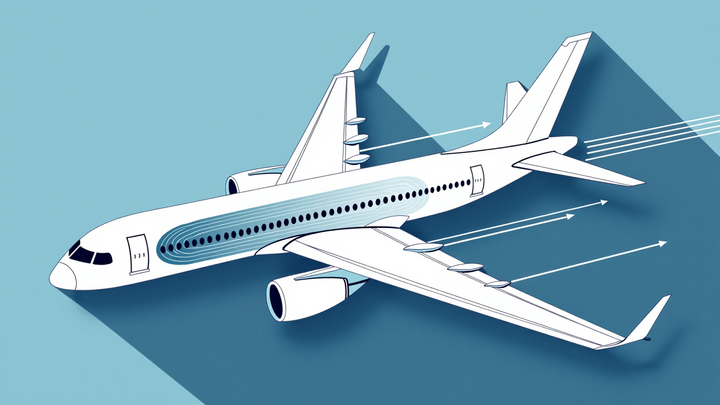
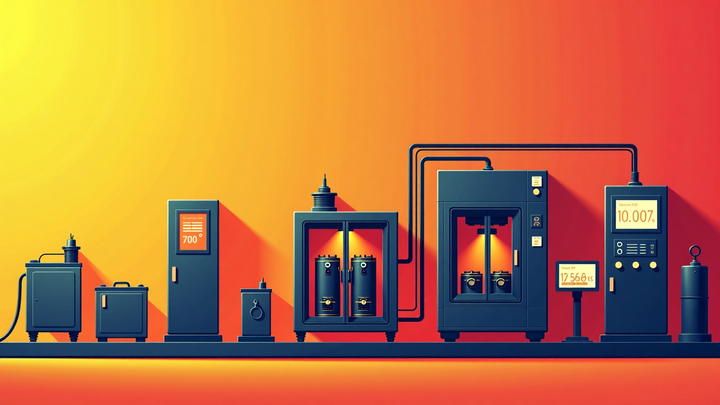
Comments ()